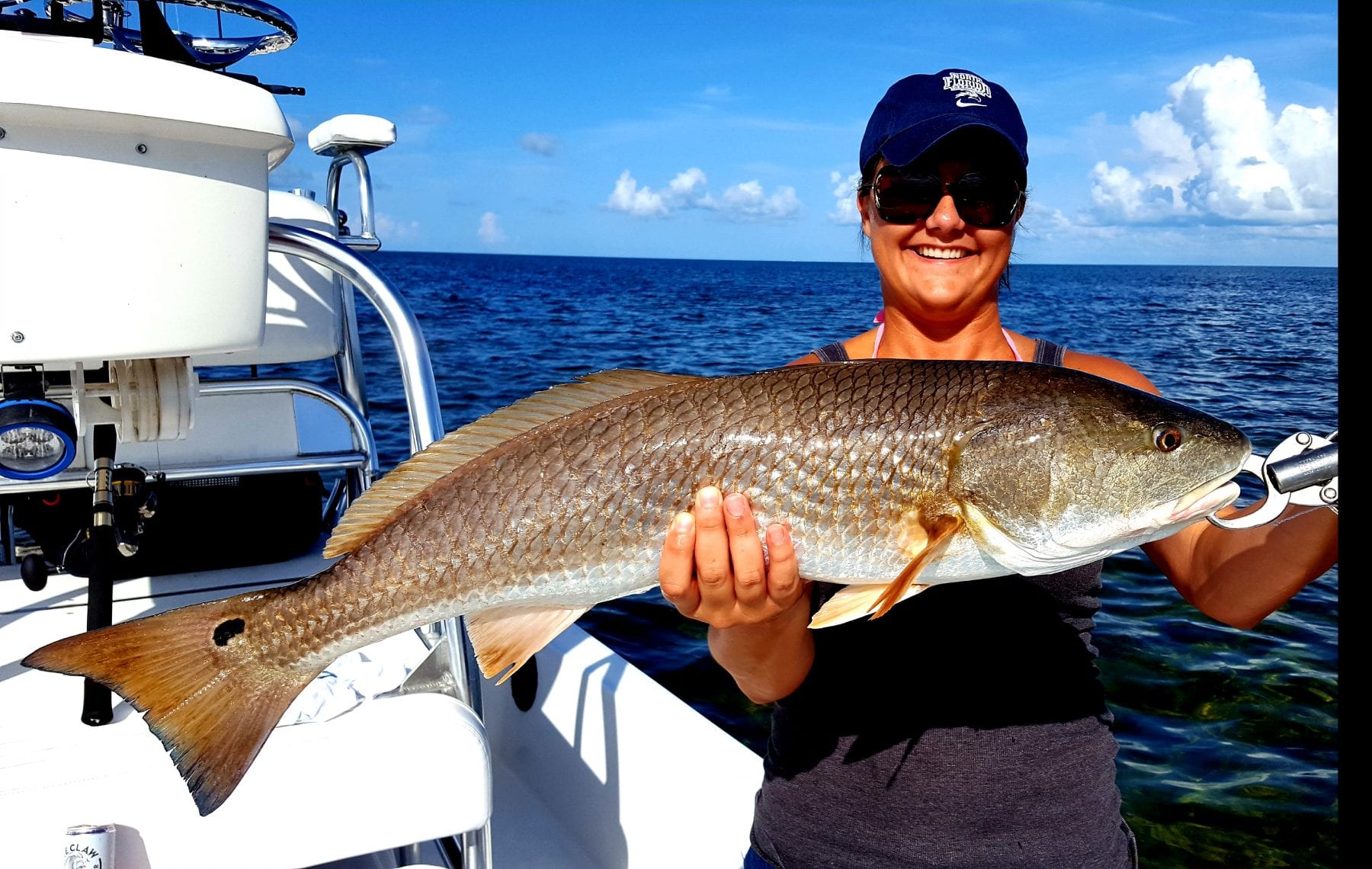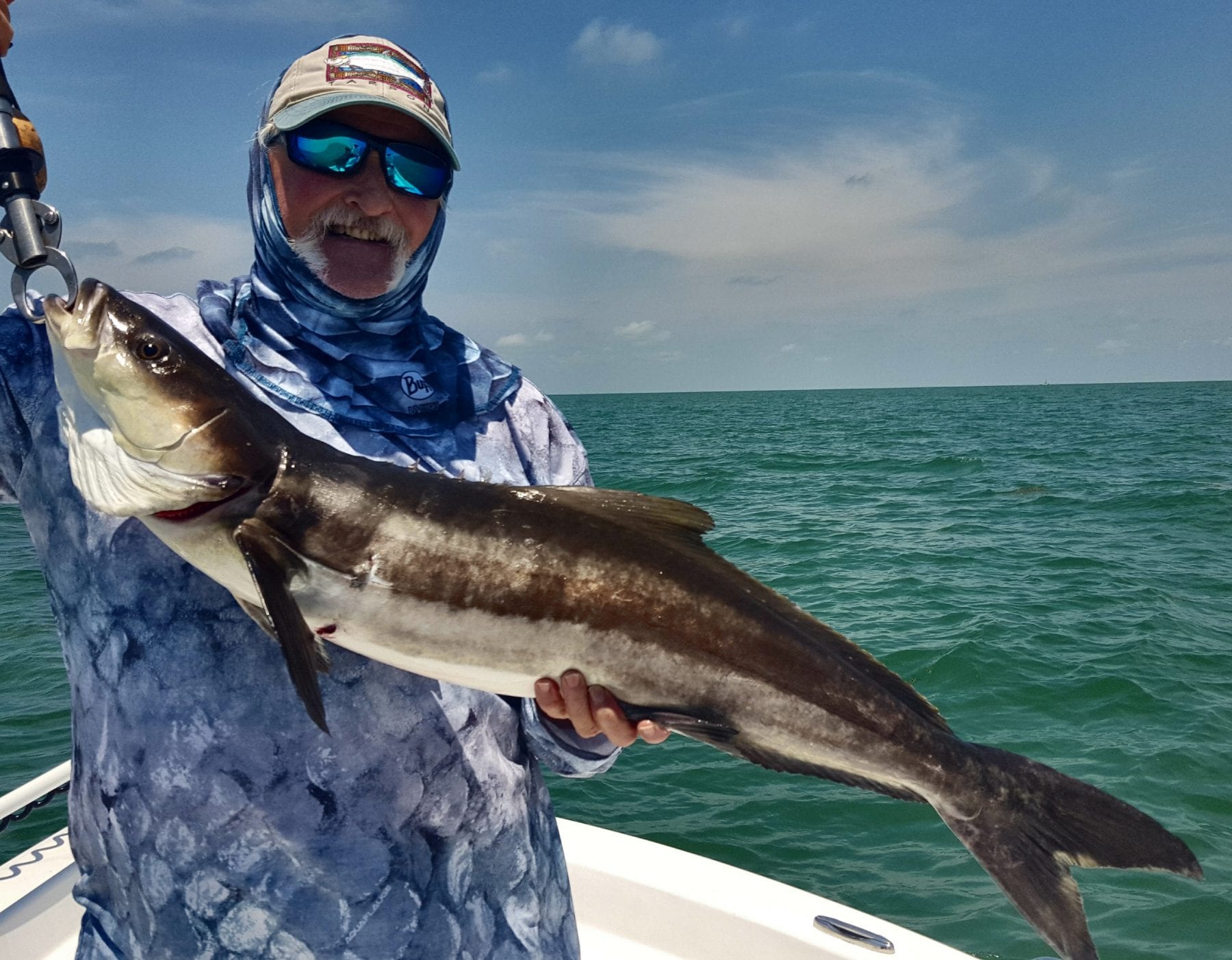Homosassa – May Fishing Report
It’s heating up here on the Nature Coast ,and now is the time to dust off your heavier tackle. These couple months, bring some of the larger species our area has to offer. Tarpon, cobia and kingfish have arrived, and these big three will give you a fight you will not soon forget.
For the inshore and offshore anglers, it’s tough to beat a cobia for a great tug of war. Channel markers, wrecks, artificial reefs and your high-profile grouper structures are ideal locations to target cobia. Inshore channel markers are always worth a look, and many times cobia can be seen just below the surface circling the structure. With the absence of fishing pressure on the offshore locations, due to the recent grouper regulations, there should be plenty of hefty cobia for those willing to make a run. Chumming brings them right to the boat, and a live pinfish on a bottom rig, and one up top, will have the water column covered.
The kingfish will be in good numbers, as well in the 30 to 60-foot range. Light drags, wire leader and plenty of line capacity is necessary to tackle a smoker king. Trolling a variety of plugs or spoons works well for those wanting use artificials. Anchoring up over live bottom, and using an assortment of live and dead baits, such as threadfin herring, cigar minnows or a frisky live blue runner is kingfish candy. Keep an eye on the horizon for the skying fish, blasting through baitfish schools to help you locate schooling fish.
Homosassa is world renowned for its tarpon fishing, and now is the time of year history is made. Many fly-fishing world records have been set here and anglers from all over the world come to test their skill against the mighty silver king. The flats to the south of Homosassa are primarily for fly anglers and is a specialized fishery. As the fish start migrating north, usually by mid June, the oyster bar cuts in Crystal Bay will be an ideal spot to free line a live pinfish, and put a tarpon in the air.
On the inshore scene, the trout and red fish will be a good bet as well. The trout will start becoming less structure orientated, and spread out over spotty bottom. The spotty bottom of the sand and grass mix, ranging from 5 to 10 feet, will be the productive area. A 1/8oz DOA cal shad tail jigs in the glow color is hard to beat, and I prefer the chartreuse color jig head to be a great combination. On days when there’s little breeze, try a jig and cork rig combination. The sound of the clacking cork in the deeper water, usually draws the larger trout to your bait. For locating red fish, start on the outside rocky points and preferably on incoming tide. As the tide floods in, the fish move right onto the rocks, and a free-lined live shrimp, pinfish or a fresh piece of cut mullet will get a hook-up. If there are mullet jumping on a particular point, anchor up and give it a try. Jumping mullet is an excellent indication that there’s red fish around.
As always, feel free to contact me with any and all questions about the area. Good Fishing!



